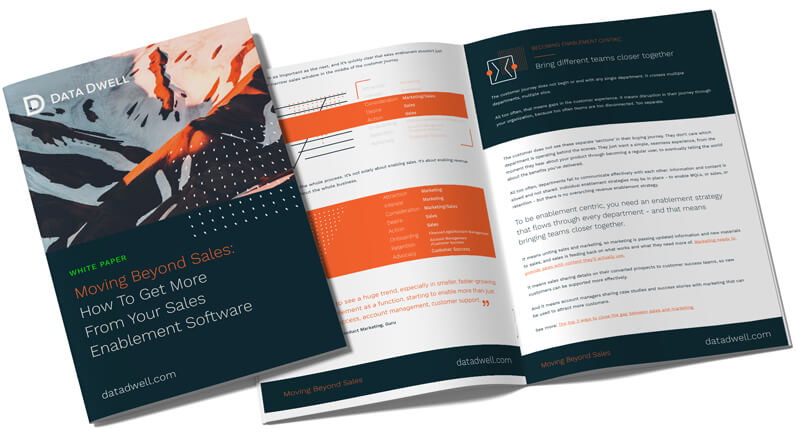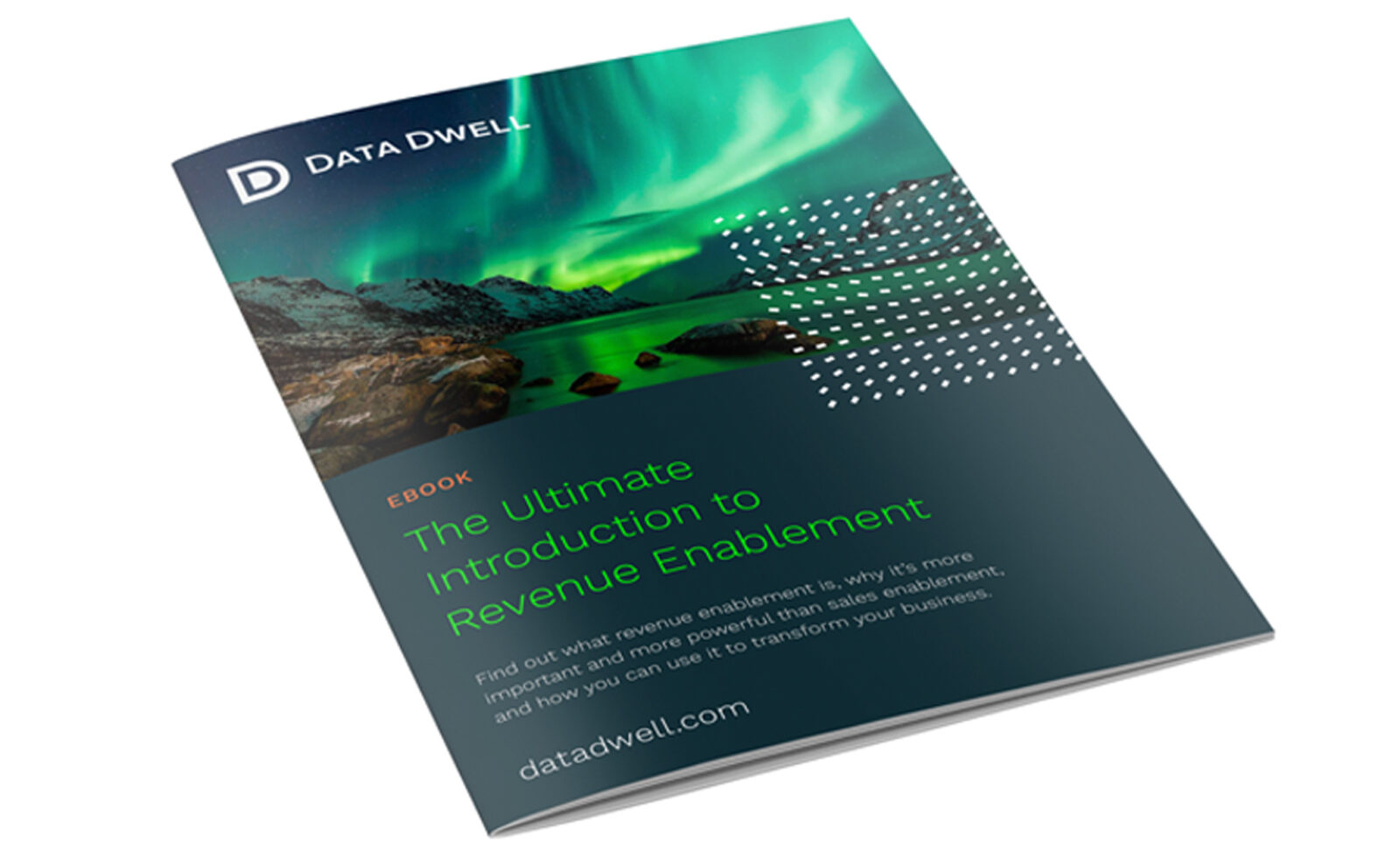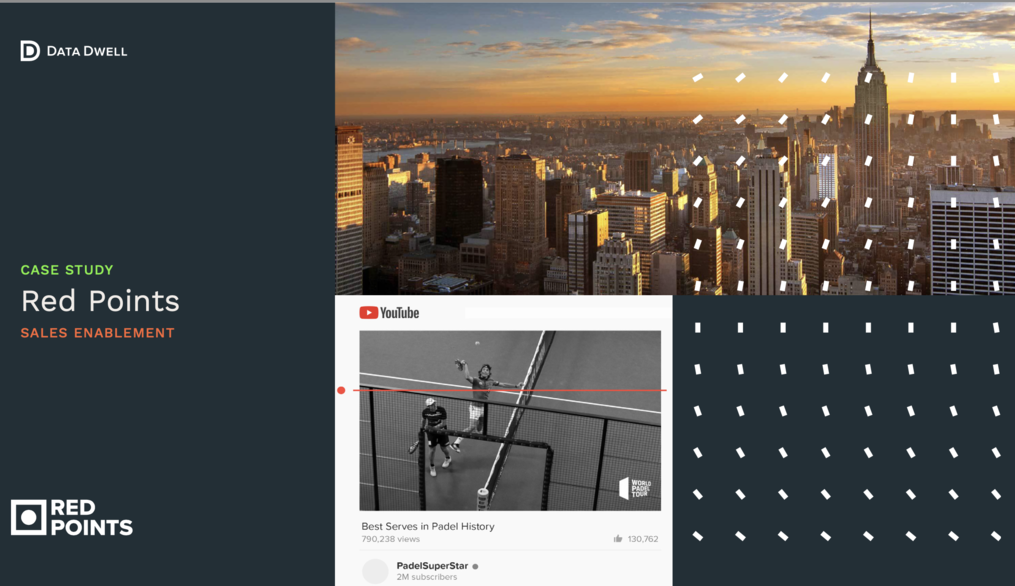 Marketing departments are generally brilliant at creating content that attracts leads and grabs attention. But when it comes to content that’s useful to sales reps, many will tell you that their marketing department lets them down.
Marketing departments are generally brilliant at creating content that attracts leads and grabs attention. But when it comes to content that’s useful to sales reps, many will tell you that their marketing department lets them down.
Why is this?
If Marketing is so good at creating content, why aren’t sales teams using it?
The answer lies in purpose and intent. Typically, the content that marketing executives create is not intended to be used in the middle or at the bottom of the sales funnel. Its purpose is to attract, not to convert.
So to create pieces that the sales team will actually use, Marketing needs to focus on sales enablement content. Here’s how to do that.
A few golden rules first
Before marketing teams jump right in and begin creating loads of content, it’s important to take a step back.
Don’t just create what you think might work. You need a plan, ideally with evidence to back it up.
Don’t get carried away. You need to make sure a single piece is working first and being used by sales reps before churning out multiple versions of it.
Don’t ignore what you already have. You might have lots of great material that works perfectly for lead generation that could be adapted for sales enablement.
Above all, there’s an important step that needs to be taken before any content is created:
1. Start by talking
Often the biggest hurdle to creating enablement content that’s used by sales teams is the relationship between the two departments. In many businesses, the two teams are completely separate, siloed from each other and with barely a good word to say about the other.
A Corporate Executive Board survey reported in Harvard Business Review found that of the responses from sales or marketing executives referring to each other, 87% were negative.
The first step then is to align these teams. To get them in the same room, on the same page. To get Marketing and Sales talking to each other, as they both share the same ultimate goals.
With communication established, sales reps can help explain to Marketing what type of content they might find useful.
2. Look at the data
The next step is to explore the data coming from the pipeline.
- Where do sales reps struggle most with converting a prospect into a customer?
- Which sticking points keep re-occurring?
- What do the sales reps with the best track record do or use to get prospects over that final hurdle?
Exploring these questions together will help Sales and Marketing identify which pieces should be a priority, the ones that will be used immediately and have the greatest impact.
For example, according to Salesforce 58% of pipelines stall because reps are unable to add value. If Sales can identify where this is most likely to happen, Marketing can create a piece of content that illustrates just how valuable the product in question is.
3. Focus on the prospect
The best enablement content will always put the prospect first, and that means Marketing should focus on informing, not selling.
Lead generation content has already attracted the prospect. In order to be useful to sales reps, enablement content must inform. It must educate. It must add value.
In the mid-funnel, all content should be aimed at convincing, not attracting. Useful content will explain how a product meets the needs of the prospect and how it delivers the value they are looking for.
And to make sure sales reps actually use the content, it should be mapped out carefully to the prospect’s journey, positioned at the parts of the funnel where it will be most effective.
If prospects usually ask about X at point Y, create a piece of content answering X and
position it just before Y. Our Sales Enablement software can help you with effective content positioning.
4. Create multiple content types
Every sales rep is different. They won’t all use the same piece of content at the same time. Some will prefer one type over another. A good marketing department will create different types of enablement content.
The best, most useful types of enablement content for sales reps are those which are product-driven or value-driven. They should give prospects the extra info they need to get over that buying line. They include:
- Feature overviews – like one pagers that clearly detail product benefits
- Demos – such as video walkthroughs to demonstrate ease of use
- Case studies & testimonials – that add social proof and show a product in action
- Reports on potential ROI – to clearly illustrate the financial gains at stake
- Comparison charts – to show prospects how your offer compares against competitors
- ‘How To’ pieces – further showing the ease of use
- Blog posts, ebooks and white papers – to deliver additional insight and value
Other pieces of enablement content that sales reps find especially useful are those which help them do their job. Email templates, phone scripts and presentation decks that all use marketing expertise – combined with sales know-how – will definitely be a welcome addition.
5. Explain the content
Even the most effective sales enablement content is no use if sales reps don’t know about it. In order to make sure it’s used, Marketing should explain each and every piece of content to the sales team.
This should include:
- Why the content was created
- Where it’s located (and this should be easy for reps to find when they’re in a hurry)
- What value it provides for the prospect
- When the content should be deployed (at which point in the funnel)
6. Get feedback and improve
No piece of content should be created and then left to its own devices, and that’s especially true of sales enablement content. In order to know which pieces of content are useful to sales reps and being used by them, Marketing need to ask!
Make sure there is a continuous, open feedback loop in your organisation, where reps can report back on which pieces of content they use and which they don’t.
In order to keep creating content that sales reps will actually use, marketing need to hear from them directly.
Gathering data from the content performance will also help marketing teams see what works and what doesn’t. And if they can see a piece of content that clearly aids a conversion from prospect to customer, they can encourage sales reps to use it more frequently – with evidence to back up their claim.
Data Dwell helps you track the metrics of sales enablement content and uncover the ROI of specific content pieces, so both Marketing and Sales can get more effective use from them.
It was specifically designed to help marketing teams create more content that sales teams will actually use, and you can book a demo of the software here.




